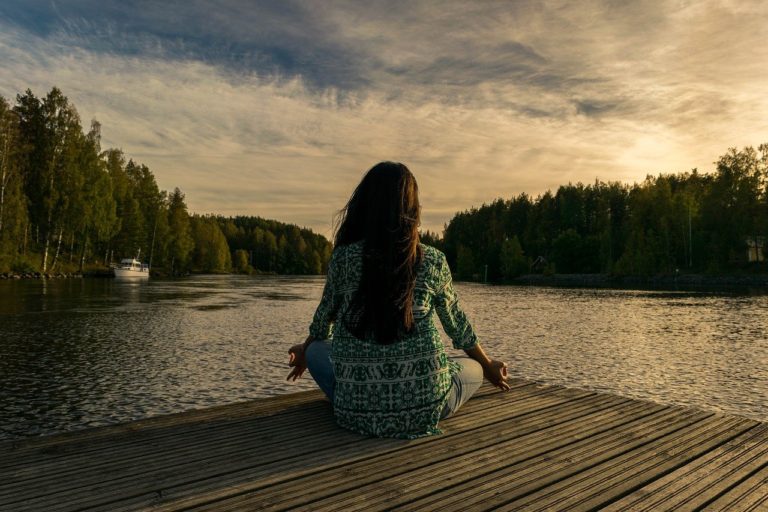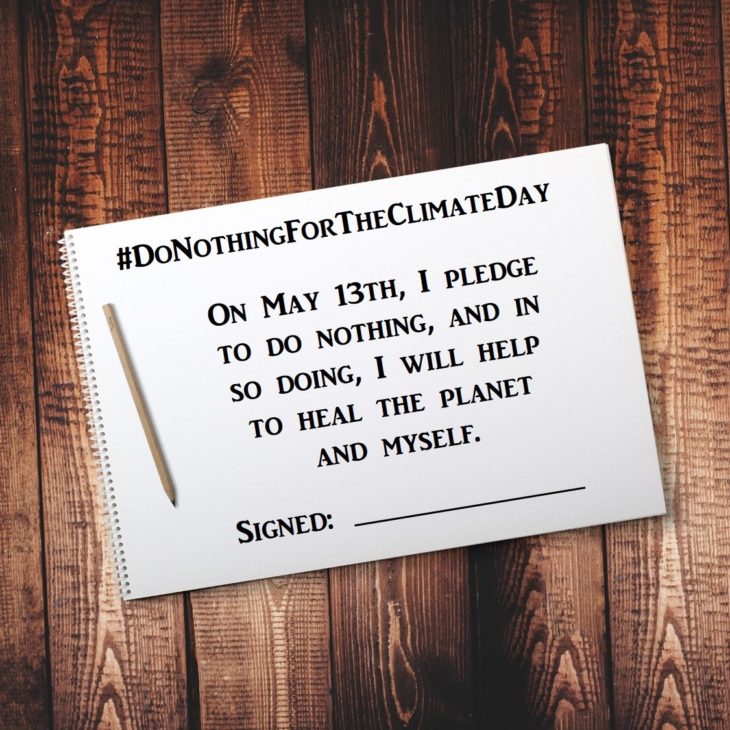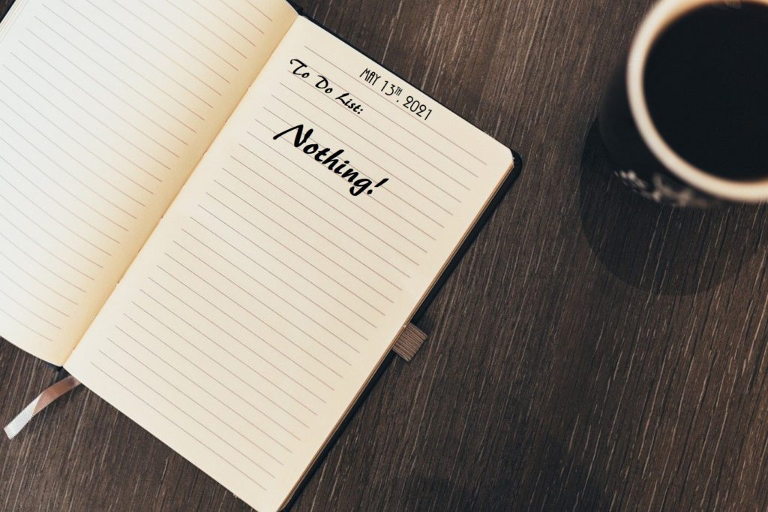Lately I’ve been reading an increasing number of articles about how many young people now suffer from climate anxiety and watching talks about how young climate organizers are “burning out,” including this Keynote presentation from the 2020 Bioneers conference by youth organizer, Jamie Margolin, cofounder of the climate organization, Zero Hour. As an environmental organizer in the early 2000s, I certainly saw many colleagues chewed up and spit out by the organizations I worked for and with. However, climate burnout now seems more internal than external—as many youth work with organizations or chapters that they, themselves, have helped create, and the driver is not unrealistic organizational campaign deadlines but the overwhelming (even if self-imposed)1 urgency of stopping the world from burning.
It makes me wonder three things:
- Are young people and activists nourishing themselves, with walks in the woods, and time with nature as a partner (or subject) rather than an object that it’s up to them to save (because nobody else is)?
- Do they have people who can support them (not just other activist-comrades who can push them forward), whether their family, their church, or some other supportive community?
- Are they simply trying to do too much in too short a time, rather than pacing themselves for the lifetime mission that this is?
And that got me thinking: perhaps we need a day we do nothing for the climate.
Do nothing for the climate?
What’s that mean? Well, the accentuation is actually on the nothing. In other words, this doesn’t mean we shouldn’t do anything for the climate (i.e. give up for a day). Rather, for one day, we should intentionally do nothing for the climate. The climate needs us to do more nothing—as it is our pursuit of growth and more, more, more (whether profit, stuff, or children) that is at the heart of our sustainability crisis.
As Stewart Udall said 50 years ago, we need to embrace simplicity and restraint, and stop with the “growthmania.” Of course, we didn’t listen to anyone advocating limits to growth over these past 50 years, and we still think we can grow our way out of the crisis (with solar panels, windmills, and electric cars). But that’s just not going to work. Instead, in the words of poet Gary Snyder, perhaps, “The most radical thing you can do is stay home.”

Now I’m sure many activists would disagree, but how about we stay home just for a day? I’m not talking about keeping the lights off for an hour, which is kind of ridiculous, but really focus a day on doing nothing, both to heal the planet, and, by simply slowing down and unplugging for a day, to heal ourselves. That, too, will help the planet, as by nurturing ourselves, we will be better able to sustain our efforts to bring people back in balance with the Earth.
Imagine if we could draw in climate activists, environmental justice advocates, the degrowth community, the deep adaptation community, anti-consumerism groups, sustainable consumption groups, and the whole Intersectional Environmentalist movement.2 Even if just a few thousand people decide to ‘do nothing for the climate’ for one day, that’s a lot of “lost” productivity, a lot less miles driven, a lot less stuff consumed, and a lot more hours spent connecting with nature instead of using energy to watch the latest episode of whatever (I think it’s in its third season now).
Do nothing for yourself.
In everyday life, let alone campaigning, people move too fast, scramble from one email to the next, from one news article describing the latest horrific climate disaster to the next, and then put that aside and focus on the next battle to wage—at all different scales, local, regional, national or global (any one of which can be overwhelming). There is no time in all that scrambling for “self-care” (which activists talk about more these days, but perhaps have yet to integrate effectively into their lives).

Photo by leninscape from Pixabay
Ultimately, self-care is about pacing yourself, keeping yourself healthy by ensuring time to cook, prepare, and eat nutritious food (not order take-out because you’re too busy to cook); by doing things other than activism that are healing, like meditation or walking in the woods (my bias) or exercise, like jogging, swimming, yoga, or karate (also my bias, but if playing basketball makes you feel good, then find some time to shoot some hoops); and by finding time to reflect on and process one’s emotions—whether through journaling, or talking, meditating, or simply thinking through them on one of those woods walks (though don’t dwell too much, as “rumination” brings its own difficulties).
In fact, if an unhealthy lifestyle comes as a side effect of being an activist, burnout may not be burnout at all, but unhealthy living catching up with you. I saw and experienced that when I was an organizer—going to bars often with colleagues (drinking too many beers and eating too much bar food). Staying up late, tuning out with media, and working long hours. That becomes a vicious, unhealthy cycle that further sets one up for burnout.
What exactly does nothing mean?
So if we were to take a day and “Do Nothing for the Climate,” what would that entail?
I think it would mean taking a day away from the fight, away from emails, from work or school, and organizing; from the news, from TV shows, movies, and definitely social media. In fact, it’d mean keeping your devices off completely if you can, and—if you work for an organization/company that offers personal days, mental health days, or even just vacation days—taking one.3
It would also mean slowing down: taking a long walk or bike ride—ideally without getting into a car or other motorized form of transport. It’d mean meditating (maybe even several times over the course of the day), ideally outside where you can connect with the nature in your area. It’d mean taking time to partake in your favorite form of exercise.
It’d also mean attending to what you put into your body. While you could fast, this should be a nurturing day (so fast if that’s nurturing). If not, cook a meal—one you enjoy cooking and eating, and is healthy (and preferably meat-free), and find time to fully enjoy it (rather than eating while reading or watching something and thus not being present). And find a few times over the course of the day to have a cup of herbal tea.
It could mean spending time with a friend or loved one.4 Not to talk politics or campaign plans, maybe not to talk at all, just comfortably walk or eat together (perhaps in silence, or if that’s not comfortable, small talk).
And sure, it could mean sitting down and reading a good book (preferably borrowed from the library and not on a screen), or a magazine that’s been calling to you, or just doing nothing. Literally nothing and see how it feels.
Just keep in mind, nothing doesn’t mean going out and doing a climate strike (hence why #DoNothingForTheClimateDay isn’t on a Friday). It doesn’t mean dealing with reimbursements or other mind-numbing paperwork you’ve been avoiding. It doesn’t mean picking up trash while going on your hike. All of this can wait until tomorrow. Just relax, spend time outside, empty your mind, slow down your body and breathing, connect with nature, and “be here now.”
Most importantly, go to bed early. Try leaving the lights off in the evening and let the light cycle shape your sleep cycle. I know whenever I go camping, I get tired as the sky darkens around me. Use today to let yourself get sleepy early and catch up on your rest. Then the next day, wake up refreshed and ready to get out and do something for the climate (whatever that may be).
Of course, you’ll still use some energy on #DoNothingDay:5 to warm (and refrigerate) food and drinks. For lighting and hot water. And all the energy used to sustain the community and national infrastructure that your life is interwoven with. But you’ll take a day off from the social media and the news cycle, the demands of “saving the world,” of keeping up with shows and entertainment, even beyond when your body may want to sleep, and instead get your body moving and living healthily and reconnecting with the larger living system it’s a part of. And then you’ll be refreshed and ready to keep on fighting.
Are you ready to #DoNothingForTheClimate for a day?
On May 13th—halfway between the do something days of Earth Day (April 22) and World Environment Day (June 5th)6—we’ll celebrate the first #DoNothingFortheClimateDay. If you want to participate, express your commitment by signing this petition to take the day to #DoNothingForTheClimate. And then share the idea with friends, colleagues, and on social media to encourage others to sign up too (though stay off social media on May 13th).

Photo by Free-Photos from Pixabay
And if your organization or activist group is interested in getting involved or co-sponsoring, let’s chat!
Endnotes
- What’s that mean? The frame that we have just 11 years to save the planet (or maybe fewer than 9 now—as a giant ticking clock suggests on Zero Hour’s website suggests) is a deeply self-destructive one to adopt. Ultimately, every moment is both too late and still time enough (like the old trope about the best time to plant a tree). This is not a Heisenberg uncertainty issue, it’s just a shifting benchmark. Truthfully, with the lag between emissions and warming, not to mention positive feedback loops being unleashed as the world warms, it is far too late. But it is not too late to slow down (or, to use pandemic language, flatten the curve) of the collapse and save billions of lives, lands, habitats, and species from being lost in the process.
- That’s the broader movement—across races, cultures, geographies, and genders—that includes everyone working on climate, environmental justice, sustainability and its many facets (biodiversity, toxics, water, nuclear, etc.), environmental and outdoor educators, spiritual environmentalism, degrowth and post-growth, transition, deep adaptation, curbing commercialism, and on and on—essentially anyone working to heal people and the planet and bring humanity back into a just relationship with Gaia.
- It’d be pretty hard to do nothing for the climate while at work, but if you can’t take time off, then commit your non-work hours to doing nothing for the climate (or delay your #DoNothingDay until the weekend). And if you want to skip school for the day, ask your parents first (and why not encourage other students to join you).
- Though only if that’s healing—if you’re an introvert, maybe you’d rather spend the day quietly on your own.
- After I wrote this, I googled if there was a day like this (as it seems like there should be). Turns out that journalist Harold Pullman Coffin proposed a “National Nothing Day” back in the 1970s—a holiday that would just be about nothing, not celebrating. And that was January 16th, which now has a one-in-seven chance of being Martin Luther King Jr. Day, so not well-aligned with this important celebration of a revered civil rights leader. Perhaps one of the reasons this didn’t catch on. Perhaps a differently timed, more focused variant would do better?
- Technically that’s May 14th but that’s a Friday so that wouldn’t do. #FridaysForFuture!





